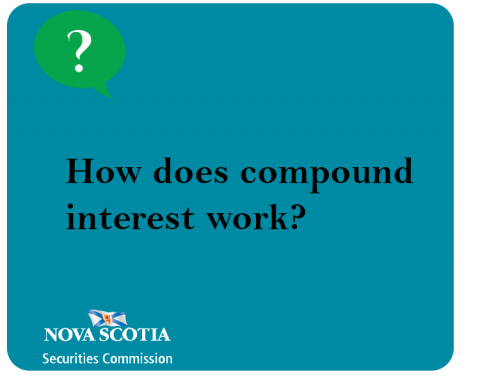Submitted by nsscadmin on

It may be an urban legend, but Albert Einstein reportedly once said that compound interest is “the most powerful force in the universe.” Compound interest can be a great tool to help investors quickly grow their money. However, if you owe money that is being compounded it can be detrimental to your finances.
Compound interest is interest you gain on your principal investment and its interest. More simply put, it’s interest on your interest. The easiest way to explain how compound interest works is to show an example of how an investment grows with compound interest compared to an investment with simple interest.
In an investment with simple interest you receive interest only on the principal investment. In our example we’re investing $100 in an investment that pays 5 per cent interest annually. After year one the investment would be worth $105. After year two the investment is worth $110. After year three the investment would be worth $115. With interest only being accrued on the principal our interest payments are the same every year at $5.
Let’s look at the same investment with compound interest. In year one it is the same as the simple interest investment and is worth $105. In year two the investment receives five percent of $105 which gives us $110.25. In year three we receive five percent of $110.25 which gives us $115.76.
After three years our compound interest investment has earned $0.76 more than our simple interest investment. This may not sound like much, but remember, the compound interest will continue to outgain the simple interest every year and grow your investment much more quickly. Over a longer period of time the compound interest investment will outgrow the simple interest investment by a substantial amount.
Here’s another way to look at it. On our simple interest investment, it will take 20 years to double our money. On our compound interest investment, it will take approximately 14.4 years to double our investment. That’s the power of compound interest.
